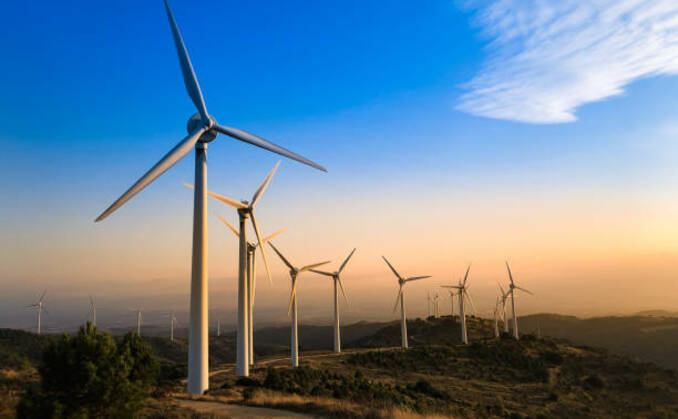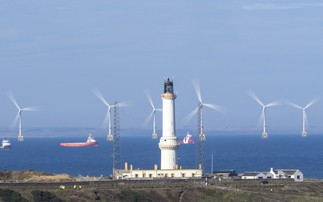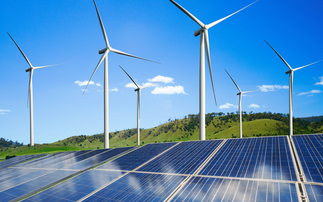
New research found cost of electricity from wind and solar projects continued to fall, despite supply chain concerns
Renewable energy costs dropped again last year across the solar, onshore wind, and offshore wind sectors, despite a global supply chain and energy crunch that has led to soaring commodity prices.
The Abu Dhabi-headquartered International Renewable Energy Agency (IRENA) yesterday published a new report, titled Renewable Power Generation Costs in 2021, which confirmed the cost of electricity from new onshore wind projects fell 15 per cent last year, while offshore wind projects saw costs fall by 13 per cent, and solar PV projects delivered a 13 per cent reduction compared to 2020.
The report also revealed that 163GW (GW) of newly installed renewable power in 2021, or almost two thirds of the total, had lower costs than the cheapest new coal-fired plant in the G20.
IRENA calculated that given current high fossil fuel prices, the renewable power capacity added in 2021 is set to reduce global energy generation costs by around $55bn in 2022.
The agency said the new report "confirms the critical role that cost-competitive renewables play in addressing today's energy and climate emergencies by accelerating the transition in line with the 1.5C warming limit and the Paris Agreement goals".
It added that solar and wind energy, which both have shorter project lead times than other energy generation projects, represent "vital planks" in countries' efforts to reduce and then phase out fossil fuels in the global pursuit of net zero emissions.
"Renewables are by far the cheapest form of power today," said Francesco La Camera, director-general of IRENA. "2022 is a stark example of just how economically viable new renewable power generation has become. Renewable power frees economies from volatile fossil fuel prices and imports, curbs energy costs and enhances market resilience - even more so if today's energy crunch continues."
He added that it was vital that governments put renewable energy at the heart of their efforts to combat soaring energy costs.
"While a temporary crisis response might be necessary in the current situation, excuses to soften climate goals will not hold mid-to-long-term," he said. "Today's situation is a devastating reminder that renewables and energy saving are the future. With the COP27 in Egypt and COP28 in the UAE ahead, renewables provide governments with affordable energy to align with net zero and turn their climate promises into concrete action with real benefits for people on the ground."
According to the research, in non-OECD countries, the 109GW of renewable energy additions in 2021 that cost less than the cheapest new fossil fuel-fired option will reduce costs by at least $5.7bn annually for the next 25 to 30 years.
The rising cost of coal and fossil fuel gas prices in 2021 and 2022 is also likely to "profoundly deteriorate the competitiveness of fossil fuels and make solar and wind even more attractive", the agency said.
Using the European market as an example, the research found that fuel and CO2 costs for existing gas plants might average four to six times more in 2022 than the lifetime cost of new solar PV and onshore wind commissioned in 2021.
Renewables investment is also helping to enhance energy security at a time when Europe is rushing to reduce its reliance on Russian fossil fuel imports in response to the Kremlin's invasion of Ukraine. Between January and May 2022, the generation of solar and wind power may have saved Europe fossil fuel imports worth around $50bn, predominantly in fossil gas, the research suggested.
There had been widespread speculation that the downward trend in renewables costs could start to slow as developers contend with rising commodities costs. The IRENA report confirmed that costs continued to fall last year, as developers took advantage of economies of scale and technology improvements, but it also acknowledged that the sector is starting to experience some inflationary pressures.
IRENA's data suggested that not all of the material cost increases seen over the past year have been passed through into equipment prices and project costs yet. As such, it noted that if material costs remain elevated, price pressures in 2022 could become more pronounced.
However, the reported highlighted how any increases in renewables costs would be "dwarfed" by the overall improvement in the cost-competitive renewables that has resulted due to soaring fossil fuel prices.
The renewables sector will be keeping a close eye on the impact of supply chain and inflationary pressures, but reports suggesting the sector's impressive run of cost reductions could be nearing its end risks underplaying how remarkably competitive clean power has become.






